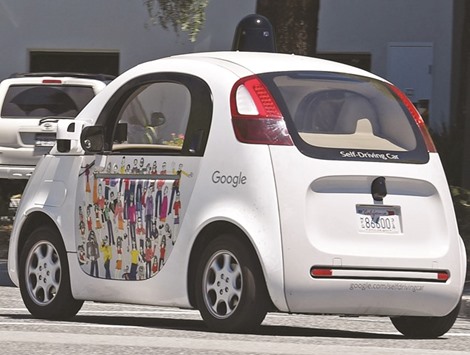Google’s self-driving vehicles are mastering complex situations on public roads, from cars going the wrong way to bicycles darting in front of traffic, as the technology company strives to win the high-profile race to achieve full vehicle automation, according to executives.
The Alphabet Inc unit, which has been developing autonomous cars since 2009, said its self-driving vehicles had logged 3.2mn kilometres on public roads, and it continues to log about 40,000 kilometres of test drives per week.
Google has been a leader in testing autonomous vehicles on public roads, prompting traditional carmakers to step up their self-driving plans to avoid being eclipsed by the tech leader, which has yet to disclose a business strategy for its car project.
The Silicon Valley-based company is focused on making cars fully autonomous, with no need for a driver, which could make driving safer and more efficient and open up transportation to the disabled and aged.
It said last year that such cars would be ready for production by 2020.
Its approach stands in sharp contrast to many carmakers, including Toyota Motor Corp and Tesla Motors Inc, which are moving towards autonomous driving in incremental steps, currently still requiring drivers.
Tesla has said it logged over 160mn kilometres since last October from drivers using its partially autonomous Autopilot system.
But kilometres driven on predictable highways are easier than navigating busy city streets, said Dmitri Dolgov, head of Google’s self-driving technology effort.
Google’s cars experience more complex situations than just following a car on the freeway, he said.
“You have to have a deeper understanding of what’s on the road and to the side,” Dolgov told Reuters following a ride in a self-driving Lexus near Alphabet’s Mountain View, California campus, during which the vehicle reacted to individuals in wheelchairs, pushing strollers and a car making a U-turn. “Every time you drive it’s different.”
The Google car can detect whether a moving object is a child or a bicycle and anticipates that both can make fast, unpredictable movements.
The car’s driving system calculates the probability of such movements and uses the results to determining how the vehicle will react.
Those types of complicated social interactions are the last, most difficult element of autonomous vehicle technology, according to Dolgov.
“You get to 90% autonomy in 10% of the time and then spend 90% of your time on the last 10%,” he said.
The closest company to rival Google’s self-driven kilometres in California is auto supplier Delphi Automotive, with 26,814 autonomous kilometres, according to a January report filed with state regulators.

